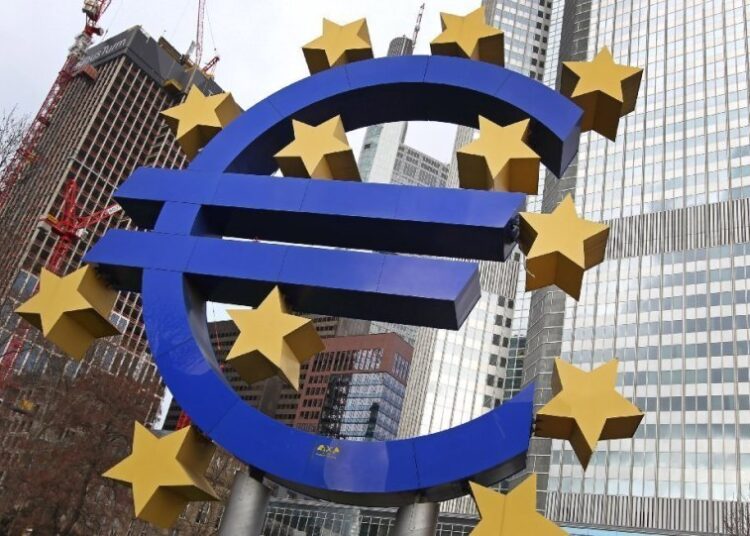FRANKFURT — Europe emerged from a double-dip recession in the second quarter with stronger than expected growth of 2.0 per cent over the quarter before, according to official figures released on Friday, as restrictions eased, consumers started spending built-up savings and major companies showed stronger results.
But the economy in the 19 countries that use the euro currency still lagged pre-pandemic levels and trailed the faster recoveries in the US and China, with the delta variant continuing to cast a shadow of uncertainty over the upturn.
The growth figure for the April-June quarter announced by the European Union’s statistics agency Eurostat compared to a drop of 0.3 per cent in the first quarter, as the 19 countries that use the euro endured a double-dip recession after a rebound in mid-2020, AP reported. The second-quarter growth figure was stronger than the 1.5 per cent foreseen by market analysts.
Much of the improvement came from southern European countries earlier hit hard by large outbreaks and loss of tourism.
Italy, which saw 128,000 pandemic deaths and a deep recession, was a major positive surprise, growing 2.7 per cent as consumer spending revived. Portugal boomed with 4.9 per cent.
Meanwhile growth returned in major economy Germany, which saw growth of 1.5 per cent after a sharp drop of 2.1 per cent in the first quarter.
German auto companies in particular have shown strong profits despite a shortage of semiconductor components as global auto markets recover, particularly for the higher-priced vehicles sold by Mercedes-Benz and by Volkswagen’s Audi and Porsche luxury brands.
In another sign of rebounding activity, European plane maker Airbus this week raised its outlook for deliveries this year.
Yet the recovery lags the one in the US, where the economy surpassed its pre-pandemic level during the quarter. Yesterday’s figures leave the eurozone 3 per cent smaller than before the virus outbreak, according to Capital Economics. China was the only major economy to continue growing during pandemic year 2020.
The stronger performance in southern Europe may be the result of households increasing their spending as restrictions are eased, said Andrew Kenningham, chief Europe economist at Capital Economics.
Spain, with growth of 2.8 per cent and consumer outlays up 6.6 per cent, illustrated the rebound as well as underlining how far it has to go. Gross domestic product there remains 6.8 per cent below where it was before the pandemic.
A slow vaccination rollout held back the European economy in the first months of the year. But Europe has made steady progress since, in recent days passing the US in total vaccinations adjusted for population.
Still, the spread of the more-contagious delta variant has led to predictions that it may slow, though not derail, the economic upturn. Travel and tourism are recovering but remain subdued.
“Given its reliance on tourism, the Spanish economy looks especially vulnerable to the delta variant that is forcing several regions in the country to impose new restrictions, while foreign governments are discouraging trips to the Iberian Peninsula,” said Edoardo Campanella, economist at UniCredit Bank in Milan.
Other figures released yesterday showed eurozone unemployment at 7.7 per cent in June, down from 8.0 per cent in May. Inflation rose to 2.2 per cent in July from 1.9 per cent in June.






Discussion about this post